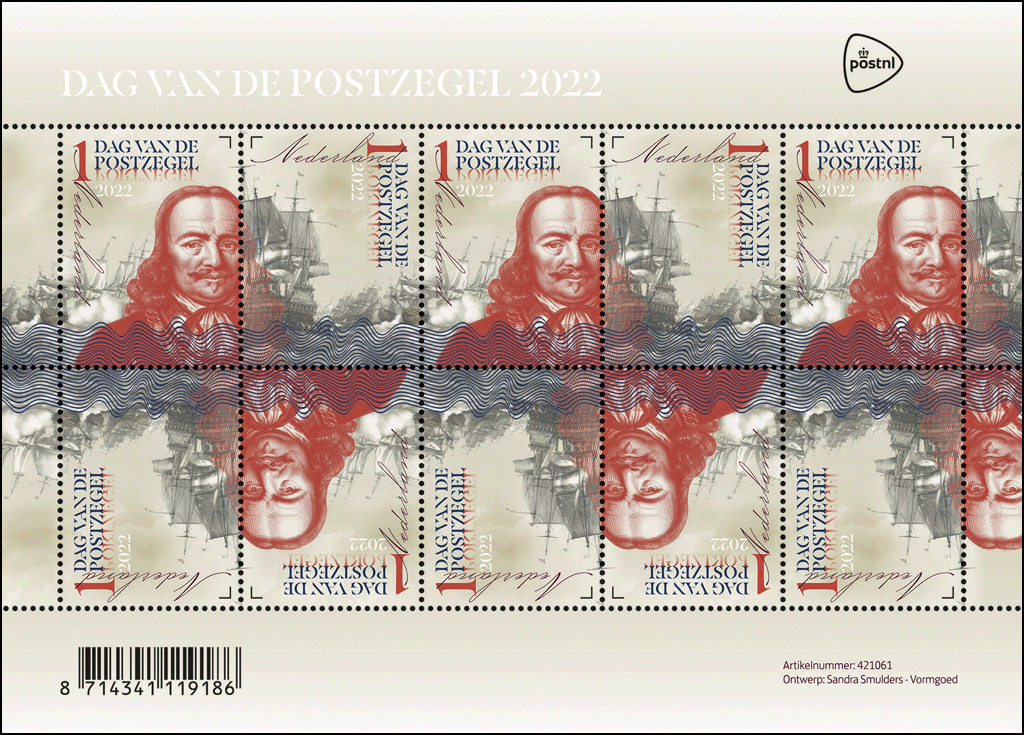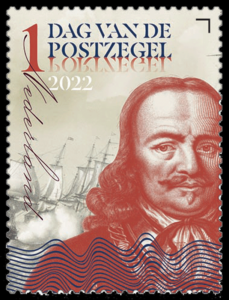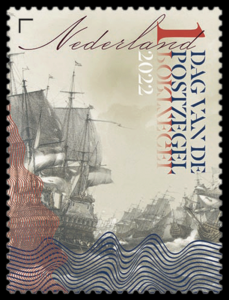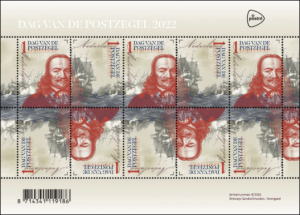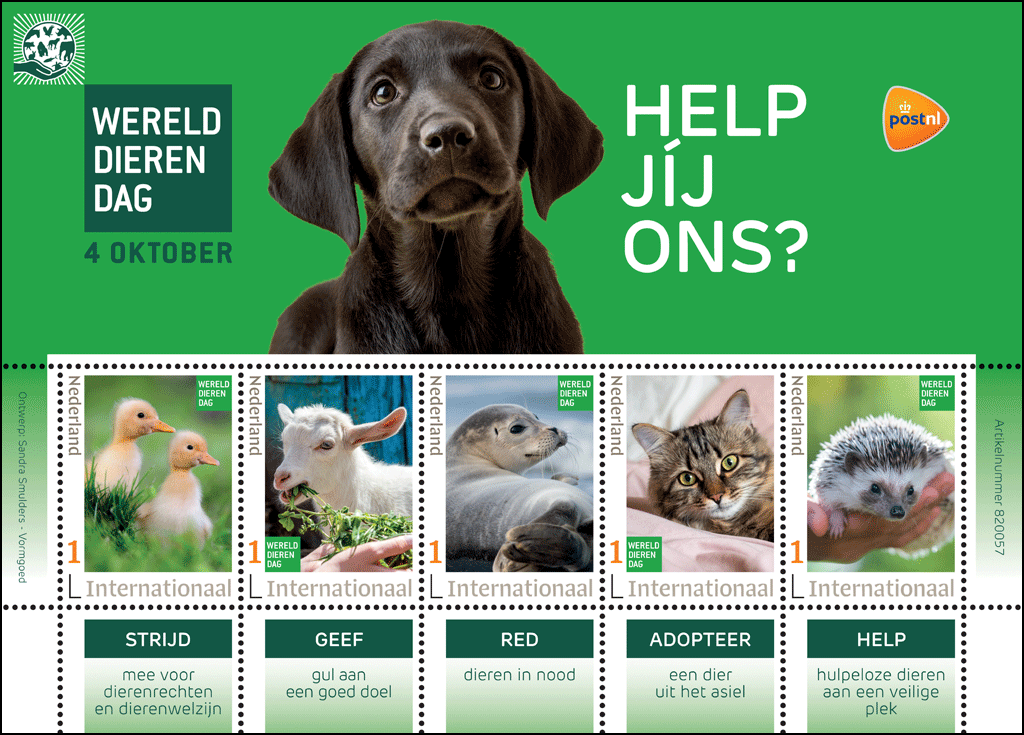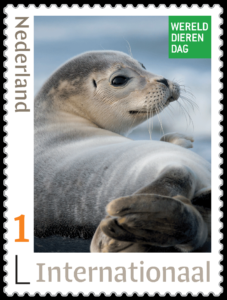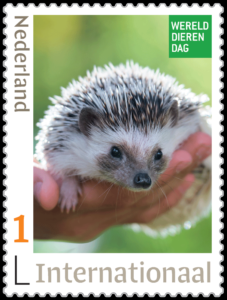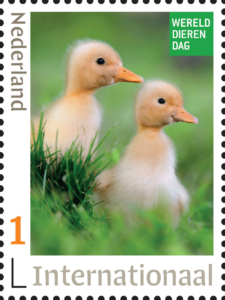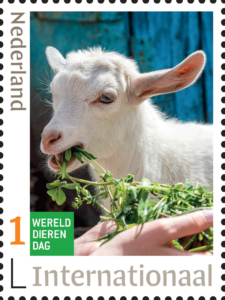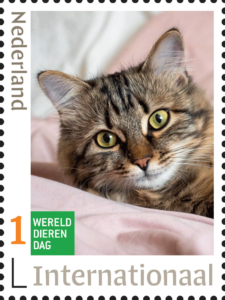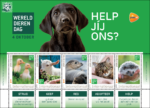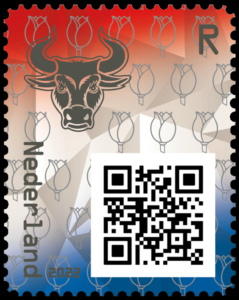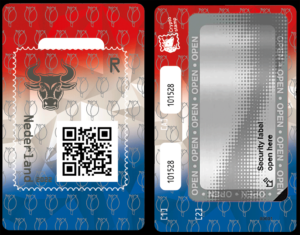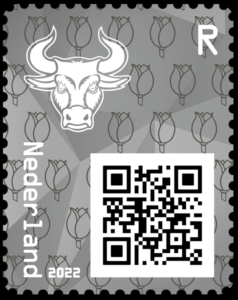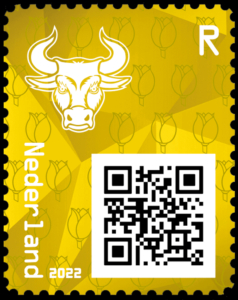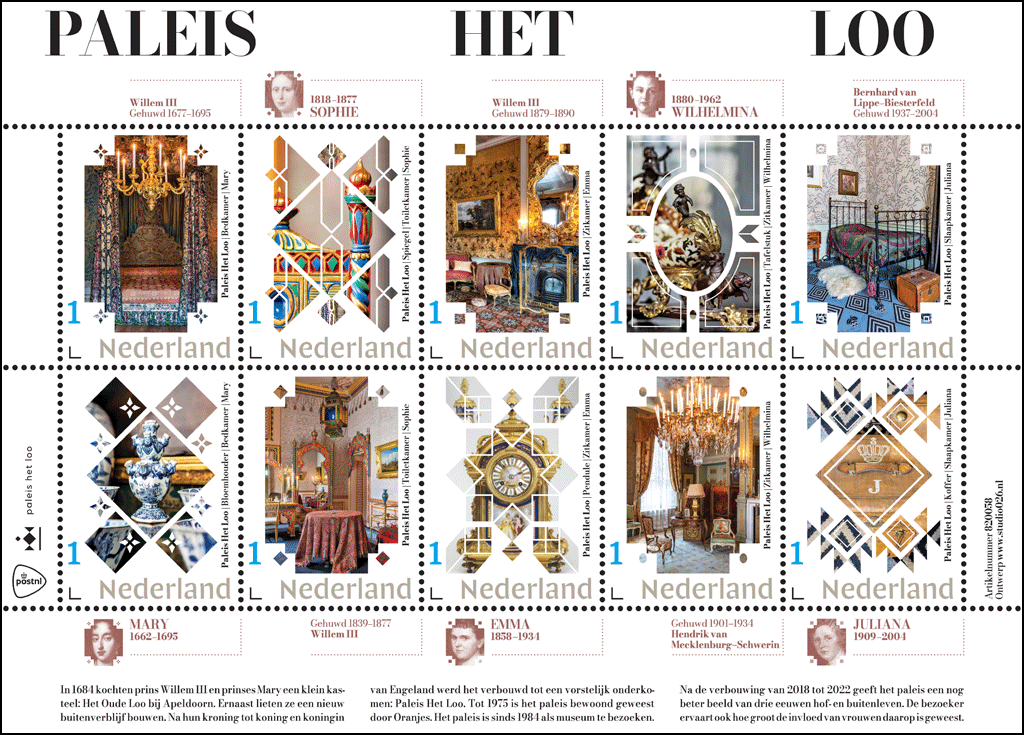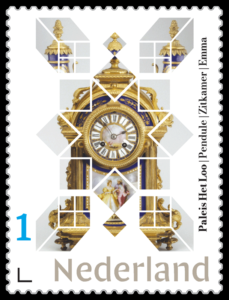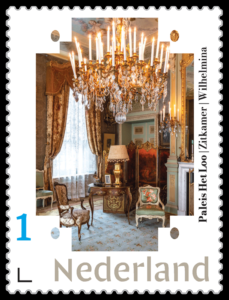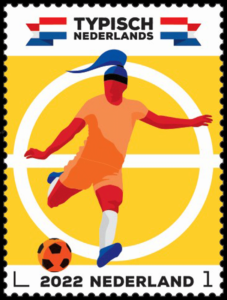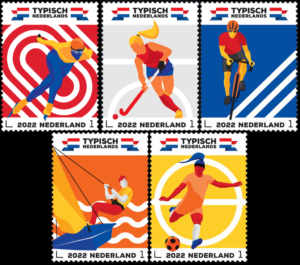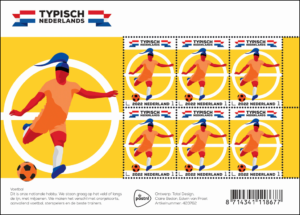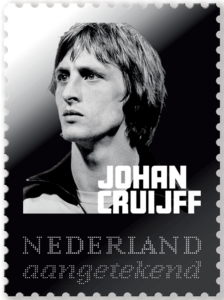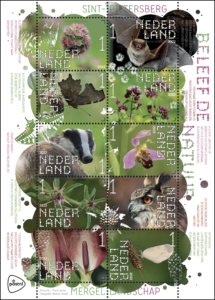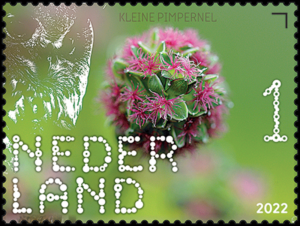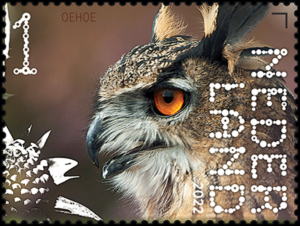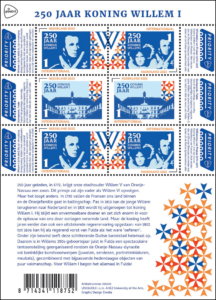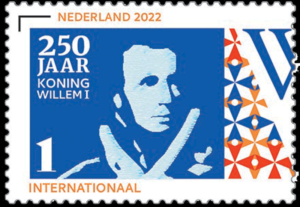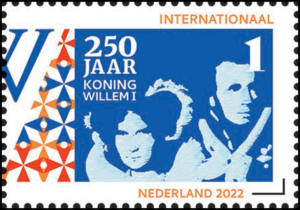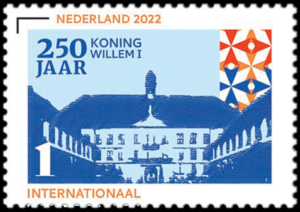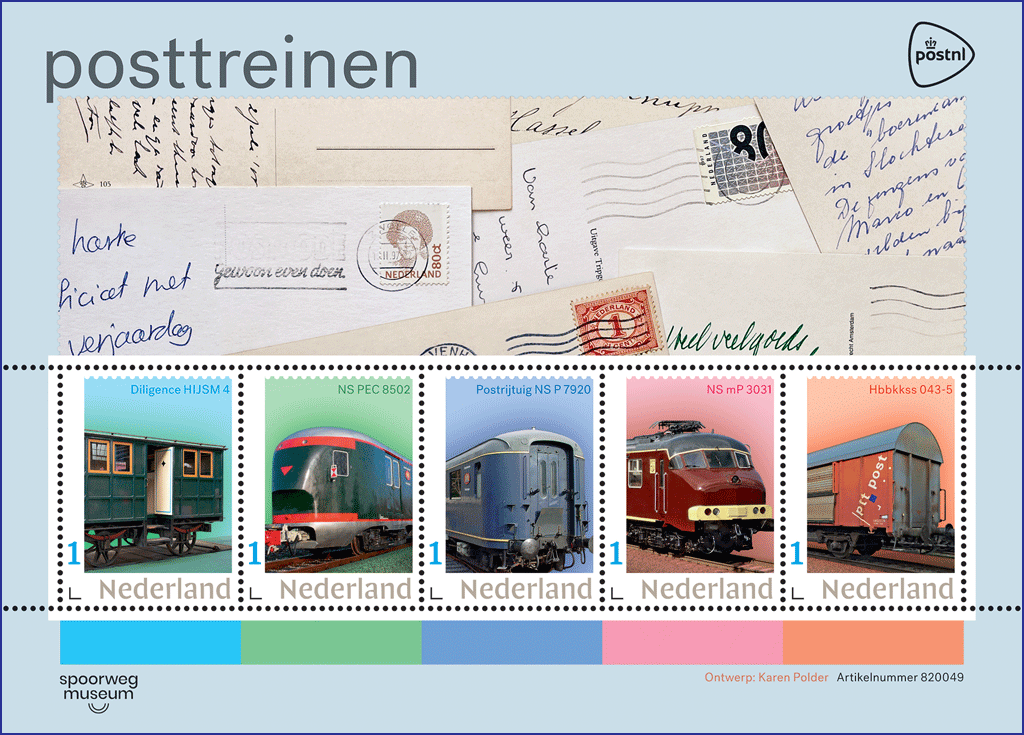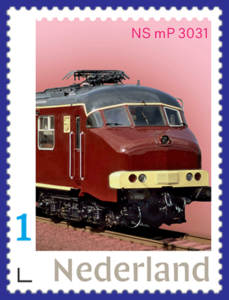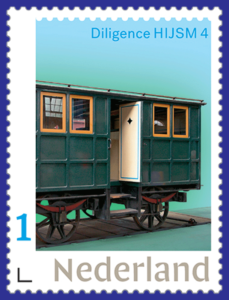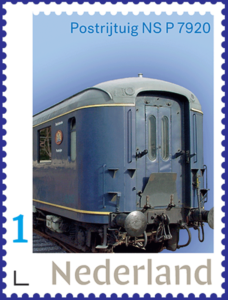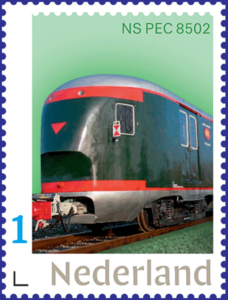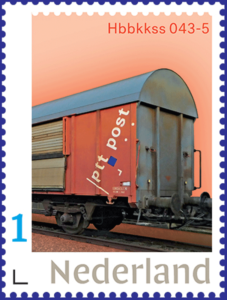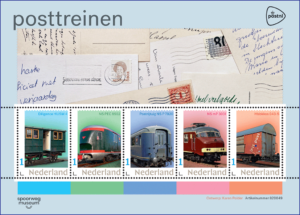[excerpted from the press release] [click on any of the pictures for larger versions]
2022 Children’s Welfare Stamps
Date of issue: 10 October 2022
Appearance: sheetlet of five special stamps in five different designs, marked with ‘1’, the denomination for mail up to 20 g in weight destined for delivery in the Netherlands, with a € 0.48 surcharge
Item number: 420960
Illustrations: Tim Artz, Nijmegen
Design: Ellen Hagenaars, Amsterdam
Colouring: Dorith Graef, Amsterdam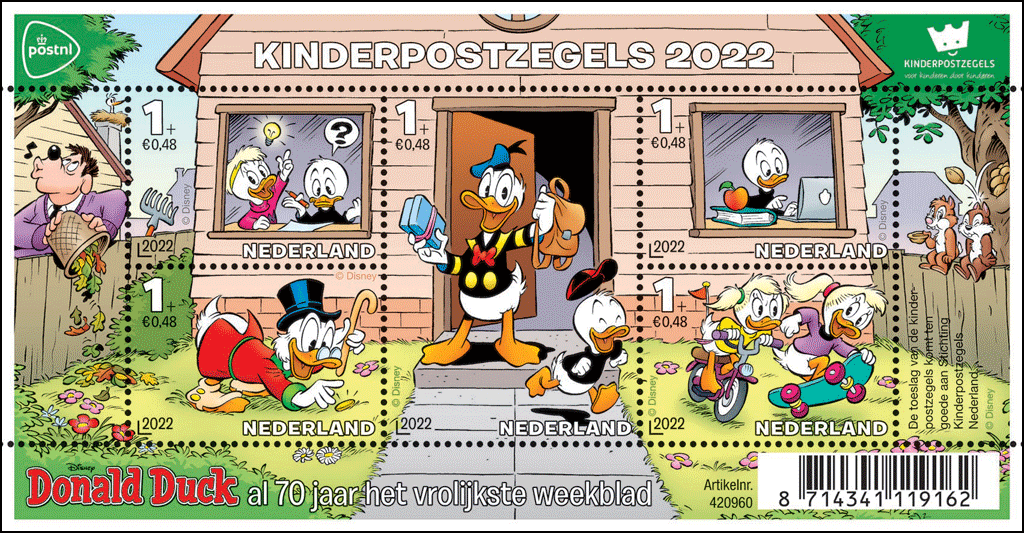 On 10 October 2022, PostNL will issue a new stamp sheetlet with Children’s Welfare Stamps marked with ‘1’ for destinations within the Netherlands. This year, the five stamps are dedicated to the 70th anniversary of Donald Duck magazine. Since 1924, PostNL has been issuing Children’s Welfare Stamps to raise money for projects aimed at improving the welfare of vulnerable children. This is achieved by adding a € 0.48 surcharge to each stamp. The proceeds from all surcharges will be used for projects developed by the independent Stichting Kinderpostzegels Nederland. The foundation is committed to giving children in both the Netherlands and in other countries a chance of a better life. To make this aid possible, the foundation organises, among other things, the Children’s Welfare Stamps campaign. The campaign has been listed in the Dutch National Inventory of
On 10 October 2022, PostNL will issue a new stamp sheetlet with Children’s Welfare Stamps marked with ‘1’ for destinations within the Netherlands. This year, the five stamps are dedicated to the 70th anniversary of Donald Duck magazine. Since 1924, PostNL has been issuing Children’s Welfare Stamps to raise money for projects aimed at improving the welfare of vulnerable children. This is achieved by adding a € 0.48 surcharge to each stamp. The proceeds from all surcharges will be used for projects developed by the independent Stichting Kinderpostzegels Nederland. The foundation is committed to giving children in both the Netherlands and in other countries a chance of a better life. To make this aid possible, the foundation organises, among other things, the Children’s Welfare Stamps campaign. The campaign has been listed in the Dutch National Inventory of 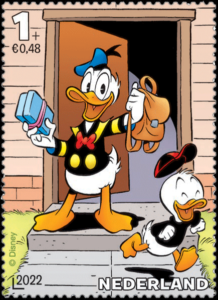 Intangible Cultural Heritage since 2017.
Intangible Cultural Heritage since 2017.
This year, more than 140,000 pupils from the last two years of primary schools will be taking orders for the Children’s Welfare Stamps from 28 September up to and including 5 October. PostNL will deliver all orders from 11 October. The proceeds from the 2021 campaign amounted to 8.5 million Euro. This year’s Children’s Welfare Theme is ‘give children the wind in their sails.’ Some children have difficulty concentrating or lack self-confidence due to personal circumstances. As a result, they do not manage to achieve their full potential. The Stichting Kinderpostzegels helps these children by, for example, coaching them individually or training them to increase their self-confidence and motivation.
The first Dutch Donald Duck weekly magazine was published on 25 October 1952, 70 years ago this year. In other countries, similar monthly or weekly magazines had already existed for some time, such as Topolino in Italy, Micky Maus in Germany, Mickey Magazine in Belgium and Walt Disney’s Comics and Stories in the US. Over the first few years, the 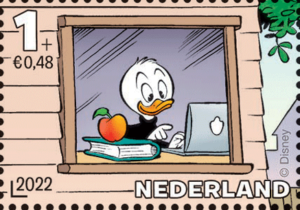 Dutch pages were alternately printed in colour and black-and-white, but in 1954 the first issue appeared entirely in colour.
Dutch pages were alternately printed in colour and black-and-white, but in 1954 the first issue appeared entirely in colour.
The current Donald Duck magazine is published by DPG Media Magazines B.V. in the Benelux. Nowadays, most of the stories in the magazine are conceived and drawn in the Netherlands. According to DPG Media, Donald Duck weekly magazine is the largest family and men’s magazine in the Netherlands, with a circulation of over 200,000. Through the use of both offline and online media, the magazine’s brand awareness is almost 100%, and the loyalty of its readers is incredibly strong.
This year, the Museum of Comic Art in Noordwijk aan Zee has organised a special exhibition dedicated to the Netherlands’ most cheerful weekly magazine until 30 October 2022.
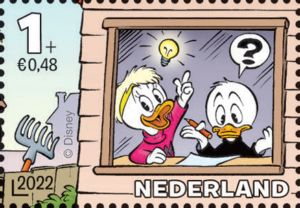 Previous Dutch Disney Issues
Previous Dutch Disney Issues
This isn’t the first time PostNL has issued stamps and stamp products featuring Walt Disney characters. In 2009, for example, a stamp booklet dedicated to the 101 Dalmatians appeared, followed in 2010 by the first issue in a long-running series of personal stamps starring Donald Duck. In 2012, PostNL issued a 12-part series with post sets featuring cards and stamps about Donald Duck in relation to the 12 Dutch provinces.
Background
Pascal de Smit, Director of Stichting Kinderpostzegels: ‘For the first time in the long history of Children’s Welfare Stamps, they feature a true international cartoon hero: Donald Duck, and with a story to boot. We see May help Huey with his homework: children helping children. Louie, April and June go to school without a care in the world: this is the mission 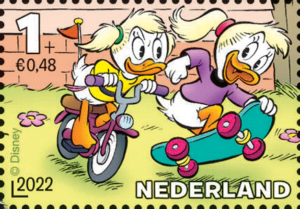 we are so passionate about.’
we are so passionate about.’
Ferdi Felderhof, editor-in-chief of Donald Duck magazine: ‘These Children’s Welfare Stamps are truly the icing on our anniversary cake. We are incredibly proud that Donald Duck and his family are appearing on the Children’s Welfare Stamps. There are few magazines for young people that are read by multiple generations. We want these stamps to exude that family feeling and the happiness of children too.’
The Design
The 2022 Children’s Welfare Stamps feature various characters who appear in the comic strips in Donald Duck magazine. The sheetlet includes four equally sized stamps and one double-sized stamp in the middle. The following inhabitants of Duckburg make their appearance: Donald Duck, Scrooge McDuck, Huey, Dewey and Louie, April, May and June, Chip and Dale and Neighbor J. Jones.
The action takes place in Donald Duck’s house and front yard. The 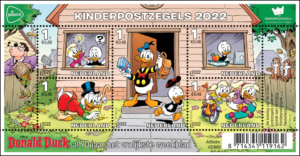 illustrations on the stamp sheet feature various recurring themes of Stichting Kinderpostzegels Nederland, including children helping each other and every child getting to school safely. The illustration continues on the edge of the sheet, which also features the logos of 70 years of Donald Duck, the Children’s Welfare Stamps campaign, and PostNL. On the stamps themselves, the denomination and the surcharge are printed in the top left-hand corner, with the country (Netherlands) in the bottom right-hand corner.
illustrations on the stamp sheet feature various recurring themes of Stichting Kinderpostzegels Nederland, including children helping each other and every child getting to school safely. The illustration continues on the edge of the sheet, which also features the logos of 70 years of Donald Duck, the Children’s Welfare Stamps campaign, and PostNL. On the stamps themselves, the denomination and the surcharge are printed in the top left-hand corner, with the country (Netherlands) in the bottom right-hand corner.
Just like last year, the illustration on the Children’s Welfare Stamps was created by comic strip artist Tim Artz from Nijmegen. While Tom Puss and Olivier B. Bommel took centre stage in 2021, Donald Duck plays the lead in 2022. The focus on the Disney comic characters coincides with the 70-year anniversary of the most cheerful weekly magazine in the Netherlands: Donald Duck.
 Every child in our country is introduced to Disney sooner or later. ‘You can’t avoid it,’ says Artz. ‘You’re bound to bump into it at some point. I was about 6 years old when I first watched Disney cartoons on België 2, including episodes of the animated series “Duck Tales” and short films from the 1930s and 1940s. I loved them all. Later, we also had a subscription to the magazine at home and I started collecting albums with the best stories. These were drawn by Carl Barks. That’s when I became a true fan.
Every child in our country is introduced to Disney sooner or later. ‘You can’t avoid it,’ says Artz. ‘You’re bound to bump into it at some point. I was about 6 years old when I first watched Disney cartoons on België 2, including episodes of the animated series “Duck Tales” and short films from the 1930s and 1940s. I loved them all. Later, we also had a subscription to the magazine at home and I started collecting albums with the best stories. These were drawn by Carl Barks. That’s when I became a true fan.
‘Barks was not only a very good artist, but also a proper storyteller. Just like Marten Toonder. Barks created Duckburg characters like Scrooge McDuck, Neighbor Jones, Gyro Gearloose, the Beagle Boys, and so on. All incredibly fascinating.’
Artz published his drawings on Internet forums, so his talent was quickly noticed, first by Disney, later by the Toonder Company. ‘I now work for both. The comics I create for Disney have a strong cartoony character. It’s mainly slapstick. I can have a lot of fun with it, also by adding my own details and little jokes.’
The basic idea for the illustration on the 2022 Children’s Welfare Stamps came from the editorial staff of Donald Duck magazine. ‘They provided me with a sketch of the house, with Donald standing in the door. Other Disney characters had also been put where the 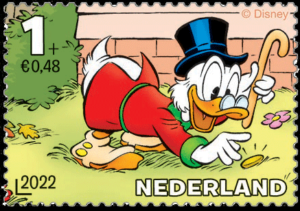 other stamps were supposed to go. I started to elaborate on that, also by adding new characters. Like Neighbor Jones on the edge of the sheet on the left, for example. And Chip and Dale on the edge of the sheet on the right. In the original sketch, Scrooge McDuck was missing. I included him because to me he is an important figure in the Duckburg stories. ’
other stamps were supposed to go. I started to elaborate on that, also by adding new characters. Like Neighbor Jones on the edge of the sheet on the left, for example. And Chip and Dale on the edge of the sheet on the right. In the original sketch, Scrooge McDuck was missing. I included him because to me he is an important figure in the Duckburg stories. ’
More about Children’s Welfare Stamps
Children’s Welfare Stamps were first issued in 1924 to give children orphaned due to the Spanish flu a safe home. The rich history shows many milestones. Stichting Kinderpostzegels Nederland helps thousands of children become more confident, in both the Netherlands and beyond.
Technical Details
Stamp size: 4 stamps measuring 36 x 25 mm and 1 stamp measuring 36 x 50 mm:
Sheet size: 144 x 75 mm
 Paper: normal with phosphor print
Paper: normal with phosphor print
Glue: synthetic
Printing technique: offset
Printing colours: cyan, magenta, yellow, and black
Print run: 1,232,000 sheets
Format: sheet of 5 stamps in 5 different designs
Illustration: Tim Artz, Nijmegen
Design: Ellen Hagenaars, Amsterdam
Colouring: Dorith Graef, Amsterdam
Printing company: Koninklijke Joh. Enschedé B.V., Haarlem
Item number: 420960:
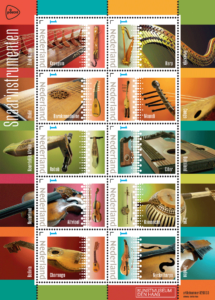 Appearance: Ten personal stamps in ten different designs, marked with ‘Nederland 1’, the denomination for items up to 20g in weight destined for delivery in the Netherlands
Appearance: Ten personal stamps in ten different designs, marked with ‘Nederland 1’, the denomination for items up to 20g in weight destined for delivery in the Netherlands the picture below. The colours on the top and bottom sheet edge are also derived from the stamp colours. The names of the string instruments are shown alternately at the bottom on the left and right-hand side of the stamps. The sheet edge next to it features the name of the country or area where the instrument comes from. The PostNL logo is printed at the top on the left-hand side of the stamp sheet; the logo of the Kunstmuseum Den Haag, the name of the designer Bart de Haas and the item number are printed at the bottom on the right-hand side.
the picture below. The colours on the top and bottom sheet edge are also derived from the stamp colours. The names of the string instruments are shown alternately at the bottom on the left and right-hand side of the stamps. The sheet edge next to it features the name of the country or area where the instrument comes from. The PostNL logo is printed at the top on the left-hand side of the stamp sheet; the logo of the Kunstmuseum Den Haag, the name of the designer Bart de Haas and the item number are printed at the bottom on the right-hand side.
